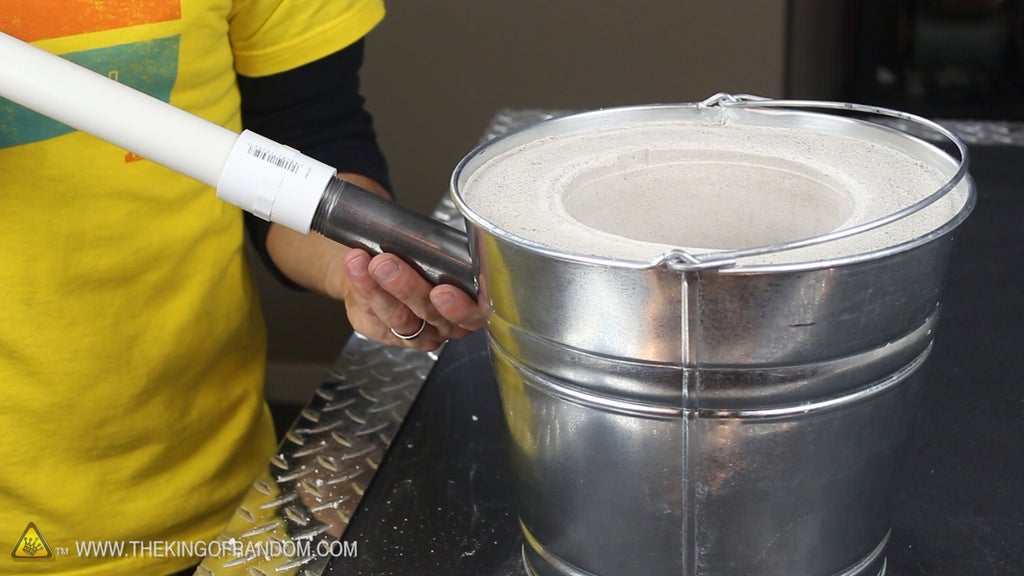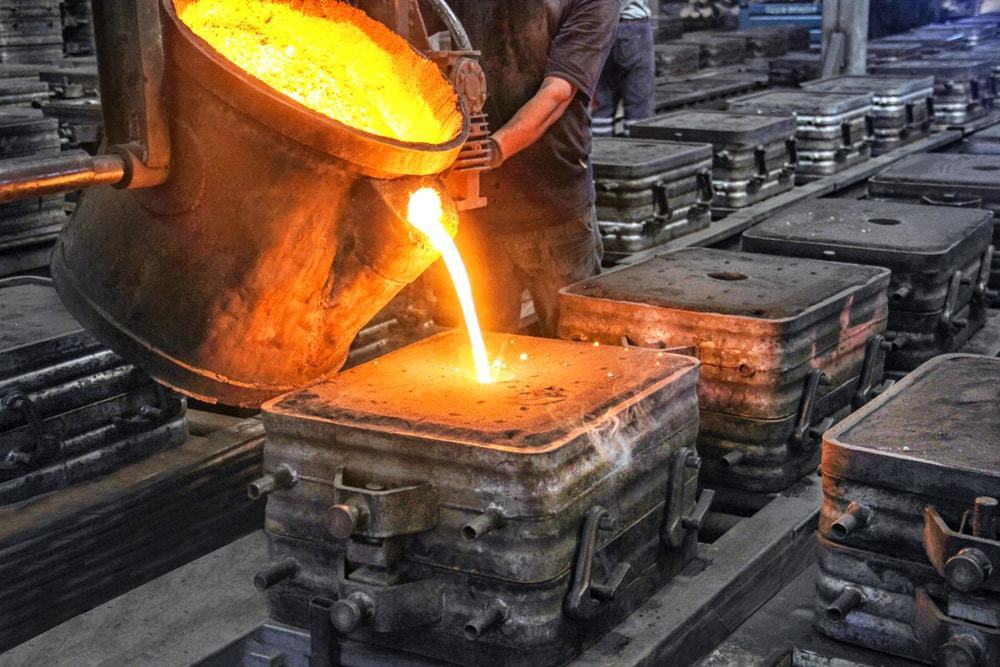The comprehensive overview to understanding how a Metal Foundry develops and casts high-quality metal parts
Discover the Innovative Techniques Utilized in a Metal Foundry for Superior Casting Outcomes
In today's affordable production landscape, metal foundries are progressively taking on innovative techniques to boost casting outcomes - Metal Foundry. Advanced computer system simulations permit for specific modeling of molten metal behavior, while 3D printing enables rapid production of complex mold and mildews. In addition, green materials and automation streamline procedures. These advancements guarantee significant enhancements in efficiency and quality assurance. However, the influence of these technologies on sustainability and production methods continues to be to be completely explored
Advanced Computer Simulations in Metal Casting
Advanced computer system simulations have revolutionized the metal spreading process by enhancing accuracy and performance. These advanced devices enable designers to develop online designs of cast parts, allowing them to assess and predict the actions of molten metal throughout the casting phase. By simulating various criteria such as temperature level, circulation rate, and air conditioning rates, manufacturers can recognize potential flaws before physical manufacturing starts.
This aggressive strategy minimizes waste and decreases costly errors, ultimately leading to enhanced product high quality. In addition, simulations promote the optimization of mold designs, making sure that they satisfy the specific demands of each project. The combination of computational liquid dynamics (CFD) and finite component evaluation (FEA) more adds to the accuracy of these simulations, providing insights that were previously unattainable. Consequently, progressed computer system simulations have come to be an important component of contemporary metal foundries, greatly progressing the market's capacities.
3D Printing for Molds and Patterns
3D printing has become a groundbreaking technique for producing molds and patterns in the metal foundry market. This technology enables the rapid manufacturing of intricate geometries that standard production approaches struggle to attain. By using additive production, foundries can produce complex layouts with decreased preparations and material waste. The capacity to generate molds on demand permits better adaptability in style iterations, assisting in faster prototyping and alterations.
3D printing can use a variety of materials, including steels and plastics, customized to details casting requirements. This flexibility improves the accuracy of molds, causing superior casting outcomes with enhanced surface coatings. Furthermore, the reduction in the variety of components needed simplifies assembly procedures, additionally optimizing manufacturing effectiveness. As foundries continue to take on 3D printing, they are poised to redefine market requirements, leading the way for advancement and enhanced efficiency in metal casting operations.
Eco-Friendly Materials and Processes
As the metal foundry industry faces enhancing pressure to reduce its ecological footprint, the fostering of environmentally friendly materials and processes has actually ended up being necessary. Factories are currently checking out lasting options to conventional materials, such as utilizing recycled steels and bio-based binders. These materials not only decrease waste yet also reduced energy intake during manufacturing.
Furthermore, developments in sand casting techniques have resulted in using synthetic sands that are less hazardous to the setting. Shops are likewise executing innovative procedures like liquified metal treatment that minimizes discharges and boosts the top quality of cast items.
Water-based finishes have actually changed toxic solvents, promoting a safer job environment. By incorporating these environmentally friendly practices, metal foundries can significantly decrease their ecological effect while preserving premium casting results. This shift not just benefits the atmosphere however additionally straightens with the growing customer demand for lasting manufacturing services
Automation and Robotics in Foundry Operations
While the metal foundry market welcomes innovation, the assimilation of automation and robotics is transforming operations substantially. Automated systems enhance processes such as mold production, metal pouring, and casting completing, significantly enhancing efficiency. Robotics assist in the handling of heavy materials, minimizing the threat of office injuries and making certain more secure environments.

Even more, using automated guided vehicles (AGVs) maximizes material transportation within facilities, guaranteeing timely delivery of components to suitable workstations. By executing these innovations, foundries can adjust to changing needs with higher dexterity, inevitably leading to improved productivity and competition on the market. As automation and robotics remain to evolve, they hold the possible to redefine typical foundry practices and drive more improvements in casting methods.
Real-Time Monitoring and Quality Control Techniques
The advancements in automation and robotics have actually led the way for a lot more sophisticated techniques to high quality assurance in metal foundries. Real-time surveillance systems make use of advanced sensing units and information analytics to visit their website track critical parameters throughout the linked here spreading process. These systems constantly analyze variables such as pressure, temperature, and material structure, allowing instant discovery of inconsistencies from established criteria.
Quality control methods currently include device discovering formulas that evaluate historic information to anticipate prospective problems prior to they take place. This positive strategy reduces waste and enhances general manufacturing effectiveness. Furthermore, integrated feedback loopholes enable rapid modifications, guaranteeing that each casting fulfills stringent top quality requirements.
The application of digital doubles-- online replicas of physical possessions-- has also revolutionized quality control, permitting designers to imitate and maximize procedures in real-time. With each other, these ingenious methods considerably boost the reliability and high quality of spreadings, establishing new industry standards in metal foundry procedures.
Regularly Asked Concerns
What Sorts of Metals Are Generally Cast in Shops?
Typically cast steels in foundries include aluminum, brass, iron, and bronze. Each metal displays special buildings, making them ideal for various applications, such as vehicle parts, machinery, and creative sculptures, enhancing their adaptability in production.

The length of time Does the Casting Process Commonly Take?
The spreading procedure commonly takes several hours to days, relying on elements such as the intricacy of the mold and mildew, sort of metal utilized, and cooling demands. Each phase influences the total duration considerably.
What Precaution Remain In Place for Foundry Workers?

Just how Are Flaws in Castings Identified and Addressed?
Flaws in spreadings are recognized with visual examinations and non-destructive screening approaches. Once detected, foundry workers resolve them by improving processes, adjusting product make-ups, and executing restorative actions to assure high quality and compliance with criteria.
What Is the Cost Array for Metal Casting Services?
The cost array for metal casting services generally varies between $1 to $10 per extra pound, depending on variables such as material type, intricacy of the style, and production volume, influencing general rates considerably.
In today's competitive production landscape, metal foundries are increasingly taking on cutting-edge strategies to improve spreading results. As the metal foundry market deals with boosting pressure to reduce its ecological footprint, the adoption of environmentally friendly products and processes has actually come to be essential. Factories are now exploring lasting alternatives to conventional products, such as using recycled go to website metals and bio-based binders. By incorporating these green techniques, metal foundries can considerably lower their environmental impact while keeping high-grade spreading results. The advancements in automation and robotics have led the method for more innovative approaches to top quality assurance in metal foundries.